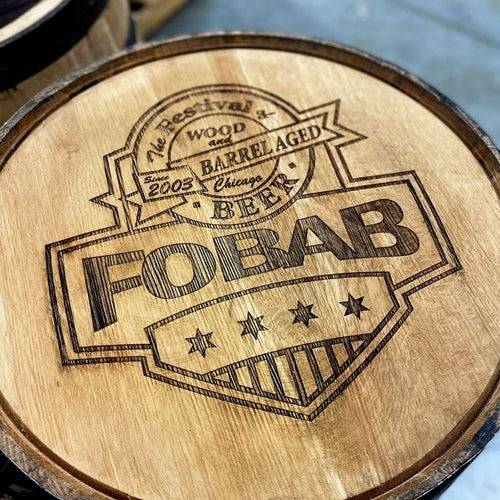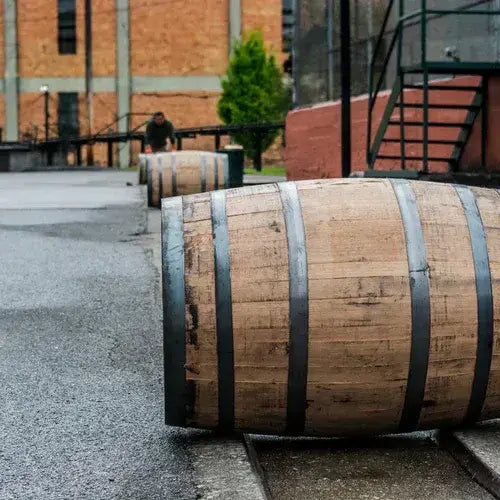Why every craft brewery needs a bourbon barrel program
July 6th, 2023

Craft beer is a crowded industry. That’s not inherently bad, as more breweries can lead to a vibrant local craft beer culture with plenty of success and notoriety to go around.
But breweries still need to find ways to stand out. Sure, curious first-time customers are always down to check out the new brewery on the block, but what’s going to turn those first-timers into fans who keep getting back?
Consistent, solid beers may do the trick, but to be honest, there are many brewers out there who can churn out any number of solid beers in all of the most popular styles. Brewers need to find ways for their businesses to truly stand out.
Our suggestion? Barrels.
OK, you got us. Of course we were going to suggest barrel-aging.
But think about it.
Good barrel-aged beer can raise a brewery’s profile within the local and broader craft beer communities. The practice can also transform a brewer’s career.
There’s a reason many of the world’s leading breweries have barrel programs. It’s all about the ROI.
Barrels have a significant ROI


If you look at barrels as an investment, then there’s no denying the potential return.
Aging craft beer in barrels comes with many benefits:
Expand a craft brewery’s lineup
There’s a broad range of beer styles that do well in barrels – and many barrel options for you to age them in.
Add different adjuncts or blend barrels and you have many options for barrel-aged variants, too.
Gain brand recognition & traction in your markets
Well-executed barrel-aged beers turn heads. Not only will your fellow colleagues recognize when you release a killer beer, but customers will, too. You can even enter contests and compete for awards.
With that newfound respect, you may find that customers start to try all of your other offerings more frequently. A good marketing strategy can go a long way in increasing success in this area.
Explore new flavors
Bourbon and whiskey barrels have so many distinct flavors that just can’t be replicated any other way. While specific flavors like chocolate, caramel, vanilla and others noticeable in used bourbon and whiskey barrels can be featured in beers many other ways, it’s that special richness, sweetness and oh-so-good oakiness that cannot be recreated any other way.
The same can be said for wine, rum, tequila, gin and other specialty barrels. Every type of wine or spirit barrel brings along the flavors from whatever first aged in the barrels – and in many cases the oak, too.
Showcase a brewer's skill and creativity
Barrel-aging isn’t for the faint of heart. Aging exceptional beer takes skill and a lot of time – for both developing that skill and allowing the beer itself to age.
Knowing how exactly long a beer needs to age before its ready and how to achieve the precise, target flavor profile – plus how to avoid over-oxidizing or spoiling the beer during its time spent resting – comes only after plenty of research, repetition and no small amount of experimentation.
Provide a revenue boost
Barrel-aged beers can be a new revenue source for a brewery – and a healthy one at that.
For example, let’s say a new brewery or one that’s looking to start a barrel program purchases two used bourbon barrels to age an imperial stout (great choice, by the way!). That would generate enough beer to fill roughly 800 16 oz. cans.
Of course, some of that beer likely would be kegged to sell out of the taproom, but we’ll keep it simple and assume it’s all going to be canned.
Because barrel-aged beer can then be sold at a premium price, a brewery can easily make thousands of dollars per barrel. More barrels, more income – and it’ll add up fast.
Then there are memberships and clubs. Many breweries reserve barrel-aged releases for these groups to drive bottle sales on top of annual membership revenue.
With the right approach, barrels can be moneymakers for breweries.
Barrel Breakdown: Revolution Brewing

To show just how much barrels can pay off for craft breweries, we asked our good friend Marty Scott at Revolution Brewing what returns he can expect from just a single barrel.
Now, remember, Marty and the crew at Revolution are among the best in barrel-aged beer, so new or expanding barrel programs may not command the same prices or attention.
But the potential is definitely there!
As for Revolution, Marty estimates the material costs associated with a single barrel filled with typical, unadjuncted barleywine or stout are $300 per 53 gallons in addition to the cost of the barrel.
However, assuming about 46 gallons are recovered from the barrel, Revolution can expect $1.00 per ounce (retail, not distributed), which totals about $6,000 – for one barrel.
Now, Revolution's rare, line-out-the-door beers can fetch closer to $2.00 per ounce and about $10,000 in just one barrel.
If the beer is served in a taproom, then you can add in sales from meals and a few other draft pours. When that's the case – and if the beer is popular – one barrel can lead to about $20,000 in retail business for Revolution.
That's some serious ROI.
Barrels are expensive, but not the largest expense
For smaller or startup breweries, one factor tends to get in the way of pulling the trigger and starting a barrel program: expense.
Barrels are pricey. There’s no way around the fact that the cost to buy and ship barrels can induce some sticker shock. The cost of storage space for barrels also can’t be ignored.
However, when looking at all of a brewery’s expenses, barrels are certainly not the highest. Plus, the ROI once a beer is released into the wild can make the upfront costs completely worth every penny.
Educate customers with the right marketing

Another frequent piece of feedback we hear from brewers, especially those located in places that aren’t necessarily craft beer hot beds, is that their customers aren’t really willing to pay those premium prices for a barrel-aged beer.
Perhaps there is some truth to that. Still, craft beer fans are pretty dedicated and knowledgeable about the craft beer industry.
Still, it’s those casual customers who want to support their town’s one or maybe two craft breweries but maybe aren’t exclusively craft beer drinkers who you need to also convince to try your barrel-aged brews.
That’s where marketing comes into play. Use product labeling, social media and even good ol’ conversation at the bar to tell the beer’s story and the role the barrel played in creating that specific beer.
You could share more about what distillery the barrel came from and what spirit it aged. Tell customers how long the beer rested in the barrel, what flavors it picked up, how the brewers knew the beer was ready to be introduced to the world, etc.
All of this information can help convince more customers to give the beer a try, even if it’s by ordering a pour at the taproom instead of a bomber or can off the shelf.
Start Small & Scale

Our advice if you’re looking to start aging your brews in used barrels: start small. Get an idea of what your customers may enjoy, then purchase a couple of barrels to get started.
Once you’ve figured out the logistics of how to operate your brewery’s barrel program, you can start to scale at your own pace.
Just remember: Barrels are an investment and the ROI takes time.
But it’s definitely worth the wait. Cheers!

ABOUT THE AUTHOR:
Ethan Schulenberg
If you’re a brewer, you’ve probably spent time chatting with Ethan. More than just a sales guy, he genuinely cares about our customers and takes pride in helping them be successful in whatever barrel project they’re embarking on.






